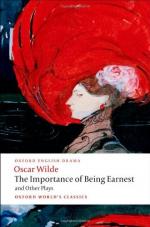|
This section contains 429 words (approx. 2 pages at 400 words per page) |

|
Aestheticism Movement
The late nineteenth century "art-for-art's-sake" movement was promulgated by Walter Pater (1839-1894), an Oxford don who tutored Oscar Wilde. Wilde became a living example of his teacher's theory, which placed style and beauty above moral and social responsibility. Wilde's adherence to this theory earned him the name "The Great Aesthete."
According to Pater, the aesthete appreciated beautiful things and beautiful literature. Interest in art was facilitated by the rise in leisure time for the upper and middle class. The middle class adopted the values of the upper class and viewed the appreciation of art as part of their social training.
The aestheticism and Pre-Raphaelite movements opposed the Victorian obsession with industry, engineering, and efficiency. When Oscar Wilde declared to customs officials in America that "I have nothing to declare but my genius," he alluded to the refinement of character that he nurtured for its own sake...
|
This section contains 429 words (approx. 2 pages at 400 words per page) |

|




